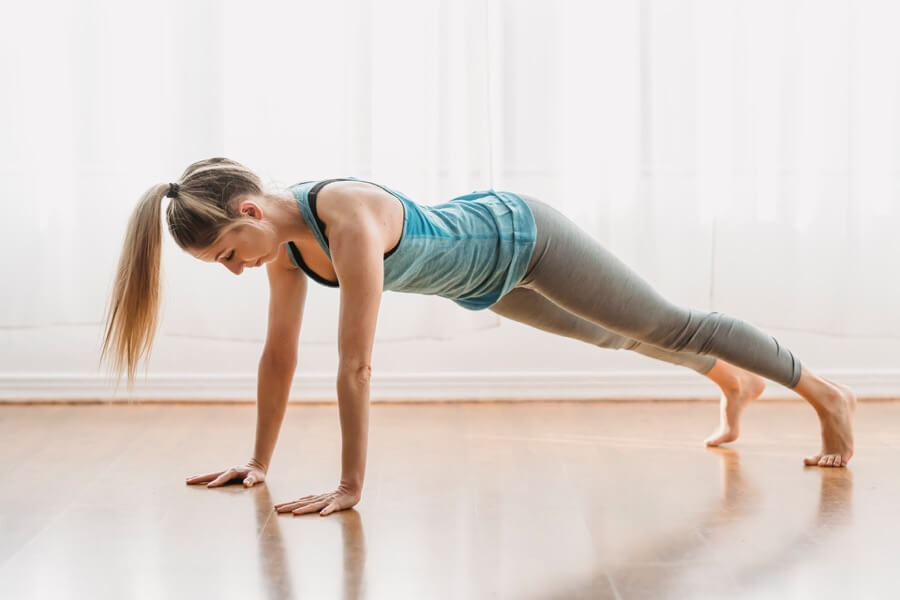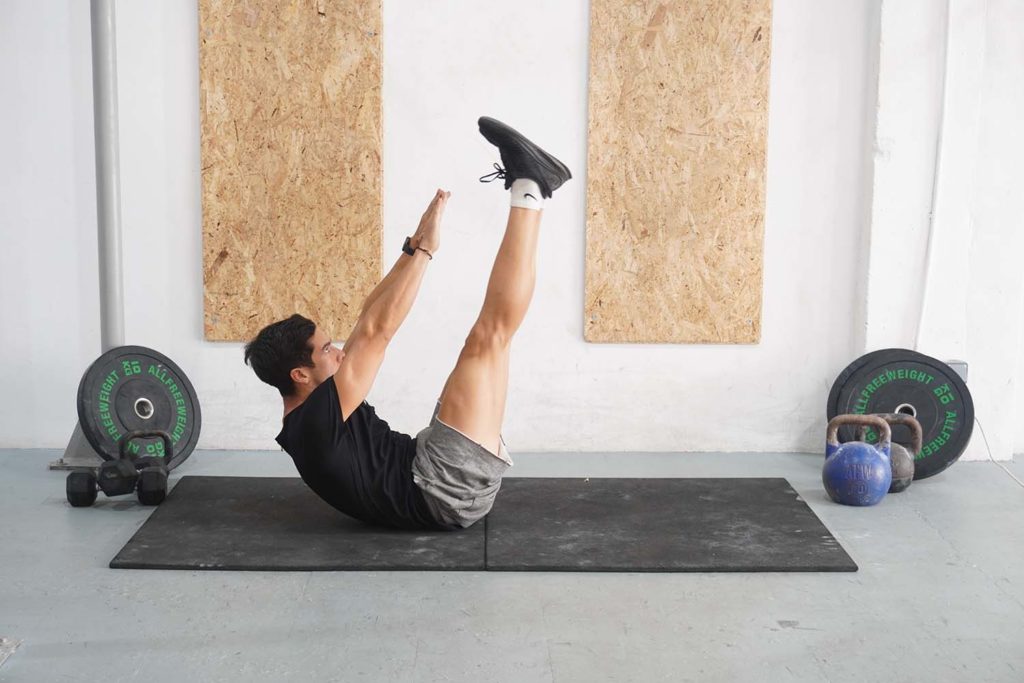The Benefits of the Spiderman Plank
The spiderman plank is a neat variation of the classic exercise that develops your core muscles. Unlike a regular plank that revolves around a static position, the spiderman plank involves dynamic movement. The objective is to assume an elbow plank position and tuck the left knee to the left elbow. Then, tuck the opposite knee to the right elbow and keep alternating.
Including a dynamic movement during plank exercises is a fantastic way to make the core work extra hard. Your midsection has to work hard to keep you in position. The musculature needs to produce the necessary force for the leg motions. As a result, you improve your strength and stability, leading to more athleticism and lower injury risk (1).
We recommend including the spiderman plank late into your workouts, and doing as many slow and controlled repetitions as possible. Alternatively, perform planks early in a core workout while your midsection is still fresh.
Level of Exercise: Intermediate
How to do a Spiderman Plank
- Get down on all fours and extend your body in an elbow plank position.
- Have your forearms flat on the floor, supporting your upper body and legs extended with your toes balancing your lower body (low plank position).
- Keep your buttocks slightly elevated, back neutral, and abs engaged for support. When seen from the side, your body should be in a straight line.
- Take a breath, and tuck your right knee to your right elbow while supporting yourself on your left foot.
- Tuck your knee as much as you can in one fluid motion and bring it back to the starting position as you exhale.
- Take another breath and tuck your left knee to the left elbow in the same manner.
- Keep alternating between left and right until you finish the set.
What muscles does a spiderman activate?
The primary muscle that works during a spiderman plank is the rectus abdominis (six-pack muscle). Our rectus abdominis covers the area from below the ribcage to the pelvis. The muscle’s primary function is to shorten the distance between the ribcage and pelvis, providing torso support (2).
Our obliques are the second muscle group involved in the spiderman plank. The internal and external obliques run along both sides of our abs, contributing to a rigid torso. Aside from that, our obliques contract as we bring our knees to our elbows.
Some hip flexor activation will also be inevitable, though these muscles are not the primary focus of a spiderman plank. The collection of five muscles aids our abs and obliques by providing support and helping us tuck our knees repeatedly.
Aside from these muscles, our shoulders, chest, and back play a role in the spiderman plank, primarily to help us maintain a straight line.
Spiderman Plank vs. Traditional Plank
The traditional plank position is more popular and beginner-friendly because you don’t need as much core strength or skill to perform the exercise. All you have to do is assume the position, maintain a steady breath, and go for as long as you can. As such, the risk of poor technique or injury is almost non-existent.

Traditional planks are also beneficial because you can adjust the difficulty by tweaking your body position. For example, you can start with knee planks, move to elbow planks, and progress to high planks.
In contrast, spiderman planks are slightly more advanced because the exercise features leg motions. Aside from making it more difficult to remain balanced, your core muscles have to work extra hard to produce the movements.
While more challenging, spiderman planks are also more engaging and provide a real sense of progression. So long as you can do more reps, you know that you’re on the right track.
Spiderman Plank Variations and Modifications
1. One Knee On The Floor
The variation is more beginner-friendly but offers many benefits of spiderman planks. Instead of alternating from your left knee to the right, you have to anchor the right knee on the floor and tuck your opposite one repeatedly. Once finished, anchor the left knee and perform the same number of reps with your opposite leg.
2. Mountain Climber

Many people don’t realize it, but mountain climbers are similar to the spiderman plank. You have to assume a plank position and tuck your knees to your upper torso repeatedly, strengthening your midsection in the process. The primary difference is that mountain climbers are more dynamic. Your knees also travel through your midsection to your chest instead of by your side to the elbows.
3. Knee Spiderman Plank
The knee spiderman plank is another beginner-friendly version. Instead of supporting yourself on your toes, you have to bend your legs and keep your knees on the ground. From there, perform the exercise as you usually would.
Mistakes to Avoid
Jerking Your Knees Up
A common error with the spiderman plank is jerking your knees to your elbows from the starting position. Doing so might help you do more repetitions, but it makes each less effective. A more effective approach is to bring your knees to your elbows slowly and in fluid motions. That way, you can keep the tension on the correct muscles and get more out of the exercise.
Forgetting to Breathe
Another common mistake with the spiderman plank is forgetting to breathe. The error is somewhat common because it tends to be difficult to breathe when bracing your core. Still, doing your best to maintain a steady breath is vital for providing oxygen to your muscles and maintaining your performance for longer.
Similar Exercises to the Spiderman
Ab Scissors
-(female)_small.jpg)
Like planks, ab scissors are a simple and effective exercise you can do without any equipment. The objective is to lie on the floor, elevate your torso, lift your feet in the air, and criss-cross. Bring your left foot underneath the right one, then have your right one underneath the left alternatingly.
V Up

V ups are another equipment-free exercise you can perform to strengthen your abs and improve your core strength. The objective is to lie on the floor, brace your midsection, and simultaneously raise your upper and lower body to the ceiling.
Decline Crunch
Decline crunches are a simple and challenging abdominal exercise that offers a decent overloading potential. The objective is to anchor your feet inside a decline bench and engage your abs to lift your torso several inches off the bench. Performing the movement at a decline forces your abs to work extra hard, making the exercise more effective.

